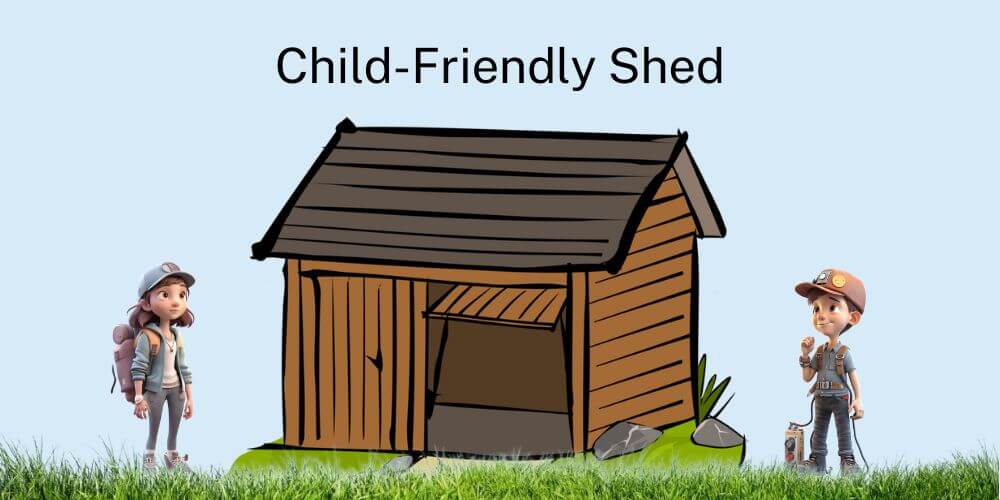As the summer heat arrives, it’s essential to choose a shed that can withstand and thrive in hot weather conditions. Selecting among the best types of sheds for hot weather can make a significant difference in maintaining a comfortable and protected storage space.
In this blog post, we will explore the best shed options for hot weather, considering factors such as materials, ventilation, and insulation to help you make an informed decision.
Types of Sheds for Hot Weather
Metal Sheds
Metal sheds, particularly those made from galvanized steel or aluminum, are excellent choices for hot climates. These sheds have high heat resistance, preventing them from warping or cracking under intense heat.
Additionally, metal sheds are often coated with UV-resistant finishes, further protecting them from sun damage. However, proper insulation and ventilation should be considered to prevent excessive heat buildup inside the shed.
Resin Sheds
Resin sheds, also known as plastic sheds, are popular options for hot weather conditions. They are made from durable polypropylene or vinyl materials that can withstand high temperatures without warping or fading.
Resin sheds typically feature built-in ventilation systems, such as vents or skylights, which allow for proper airflow, keeping the interior cooler. These sheds also require minimal maintenance, making them an ideal choice for hot climates.
Polycarbonate Sheds
Polycarbonate sheds offer an excellent combination of durability and heat resistance. The polycarbonate panels used in these sheds provide exceptional UV protection, preventing discoloration or degradation due to prolonged sun exposure.
Additionally, polycarbonate sheds allow diffused sunlight to enter, reducing heat buildup while still maintaining a well-lit interior. They are lightweight, easy to assemble and require minimal maintenance.
Wood Sheds with Proper Insulation
While wood is generally more susceptible to heat and humidity, with proper insulation and ventilation, wood sheds can still be suitable for hot climates. Insulating the walls, roof, and floor of a wood shed helps regulate temperature and prevent excessive heat absorption. Consider using insulation materials such as foam boards or reflective barriers.
Additionally, providing adequate ventilation through windows, vents, or ridge vents allows hot air to escape and fresh air to circulate.
Important Considerations
Ventilation: Regardless of the shed type, proper ventilation is crucial for hot weather. Adequate airflow helps dissipate heat and prevents moisture buildup, ensuring a more comfortable interior. Consider installing vents, windows, or skylights to facilitate cross ventilation.
Light-colored or Reflective Roofing: Opting for a shed with a light-colored or reflective roof can help reflect sunlight and reduce heat absorption. This can contribute to maintaining lower temperatures inside the shed. You may consider painting your shed.
Shade and Landscaping: Positioning your shed in a shaded area or adding natural shade elements like trees or awnings can help mitigate the impact of direct sunlight and reduce heat buildup.
Regular Maintenance: To ensure the longevity and efficiency of your shed in hot weather, perform regular maintenance tasks such as checking for any damage, cleaning the exterior, and inspecting the ventilation system.
Final Thoughts
When it comes to choosing the best shed for hot weather, considering materials, insulation, ventilation, and maintenance requirements is essential. Metal sheds, resin sheds, and polycarbonate sheds offer durability, heat resistance, and proper ventilation. However, with proper insulation and ventilation, wood sheds can also be viable options.
Understanding the specific needs of your storage space, as well as the climatic conditions in your area, will help you make an informed decision. By selecting the right shed, you can create a cool and comfortable space to store your belongings even during the hottest summer months.



